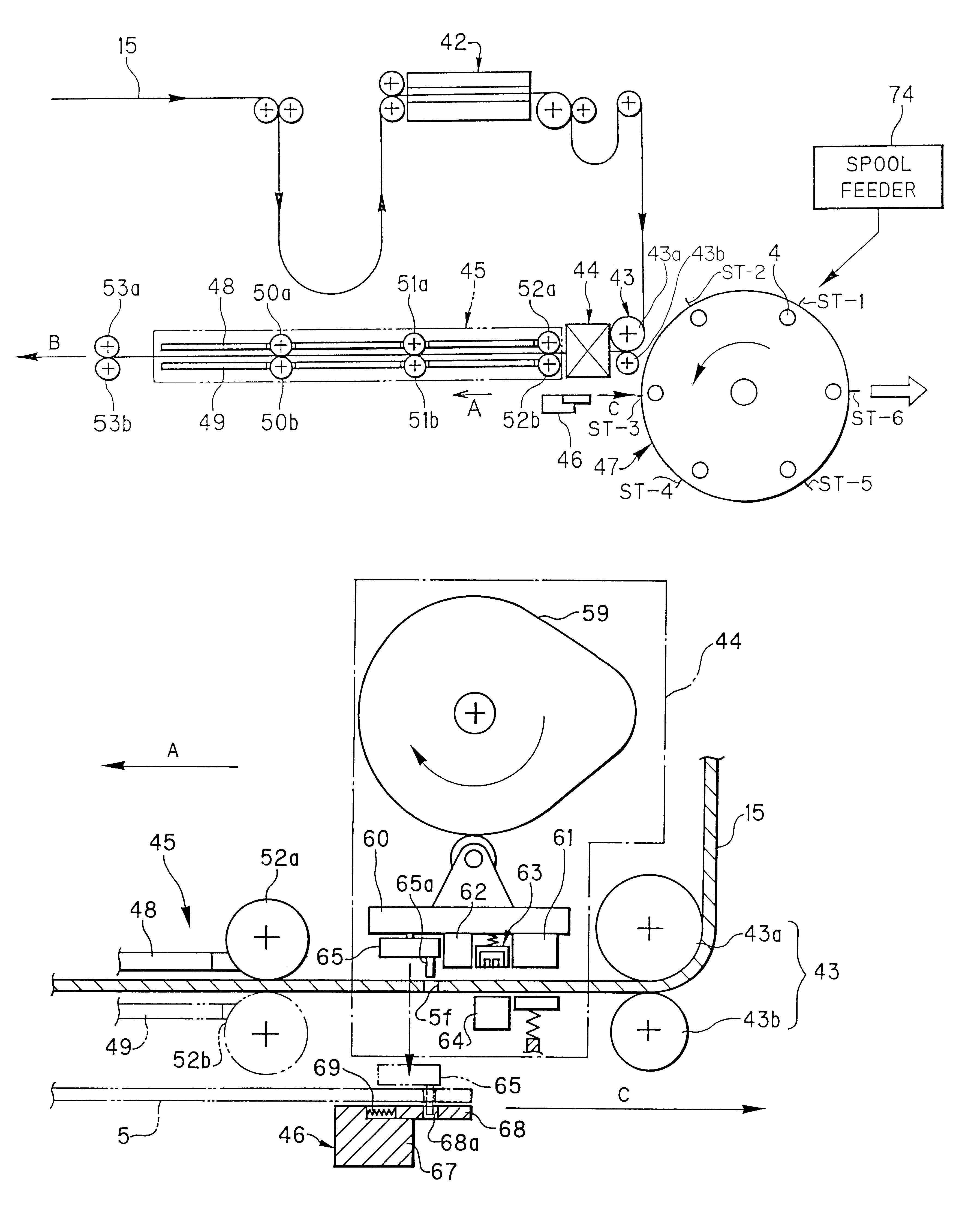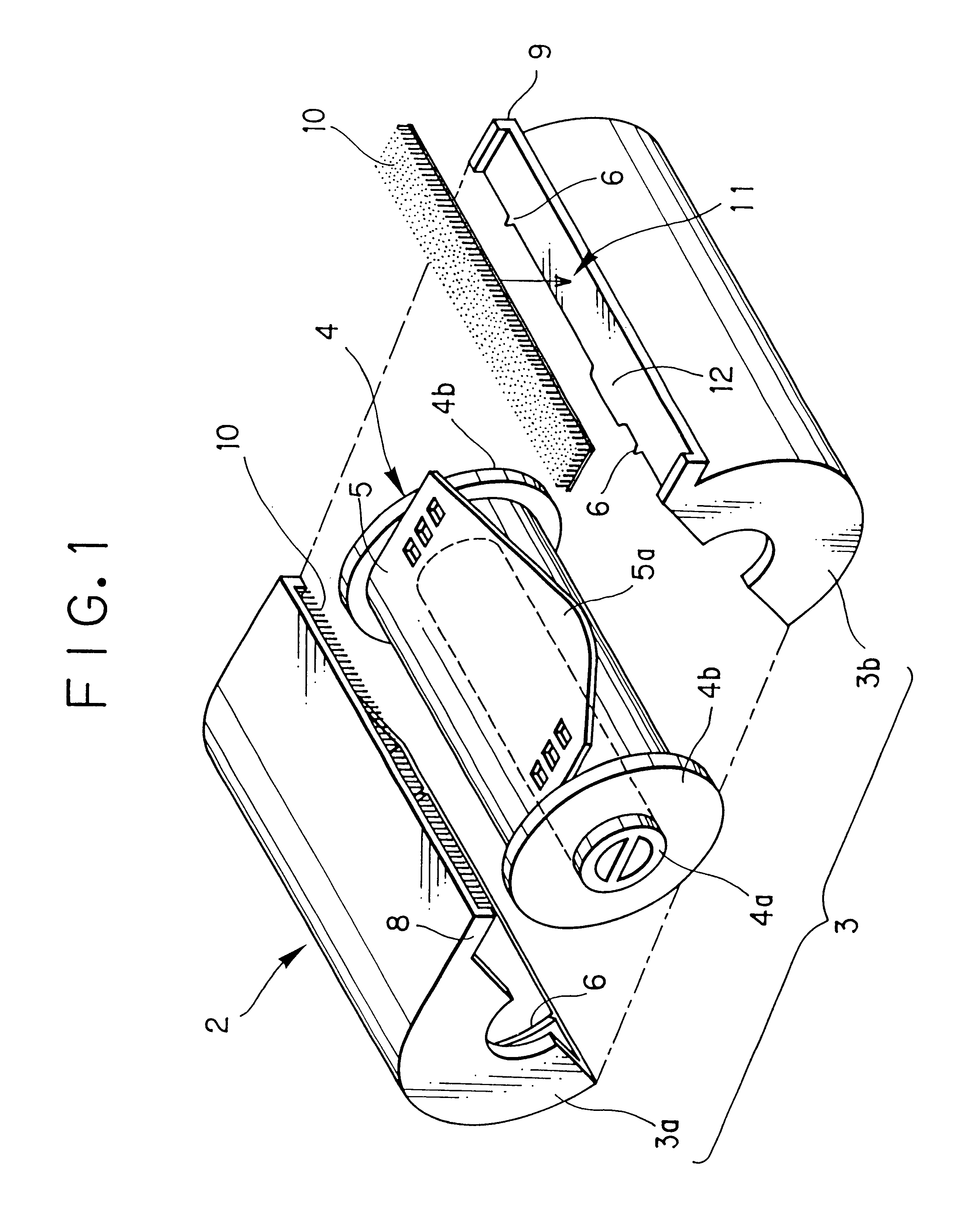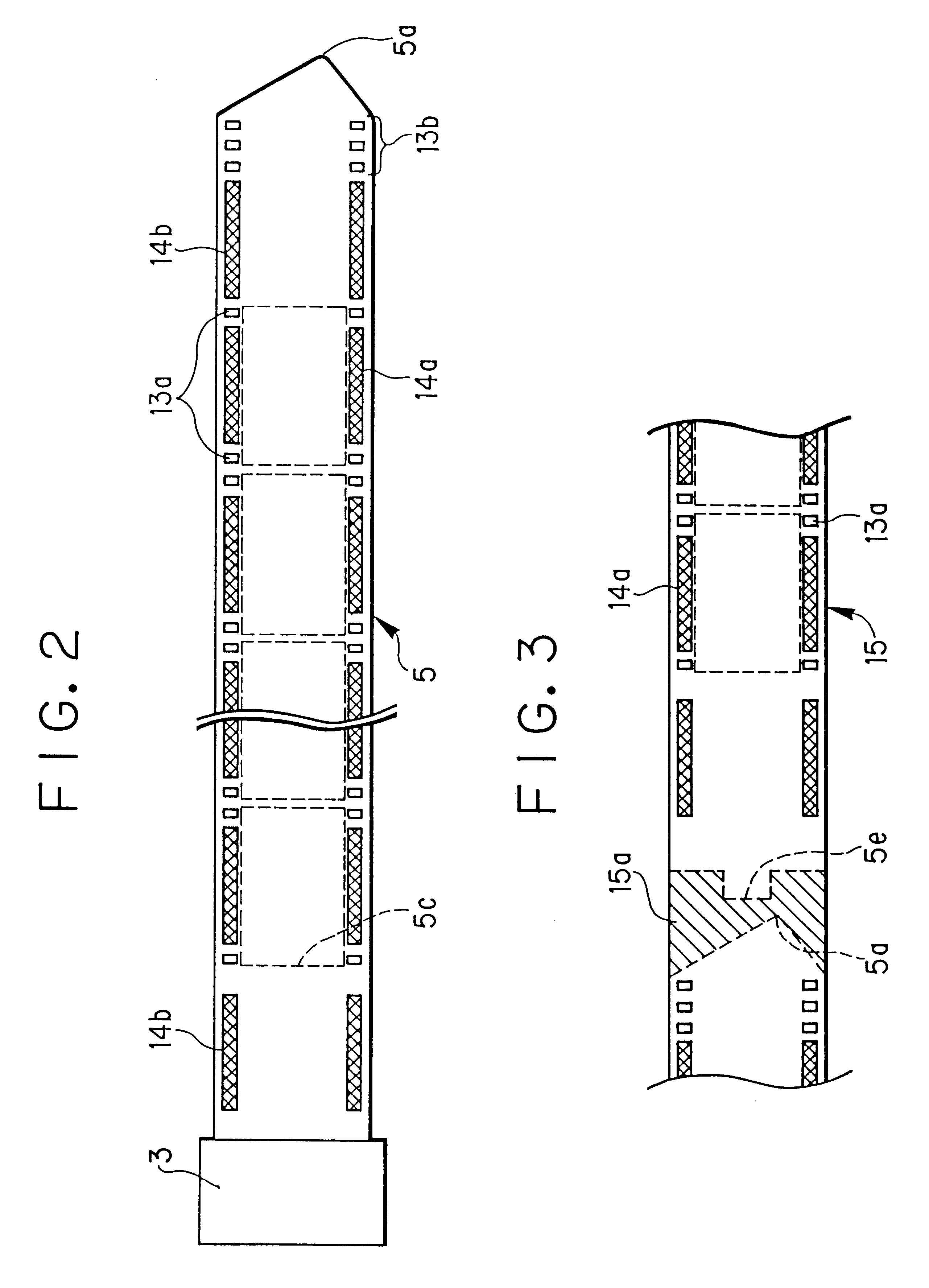Apparatus for manufacturing photographic film and photographic film cassette
a technology of photographic film and film cassette, which is applied in the direction of manufacturing tools, instruments, cameras, etc., can solve the problems of lowering the quality of the filmtrip to a certain degree, the inability to precisely position the data, and the inability to precisely read the magnetic data of the photographic film, so as to avoid scratching or blushing
- Summary
- Abstract
- Description
- Claims
- Application Information
AI Technical Summary
Benefits of technology
Problems solved by technology
Method used
Image
Examples
Embodiment Construction
An example of a photographic film cassette manufactured according to a preferred embodiment of the present invention is shown in FIG. 1. The cassette 2 is composed of a cassette shell 3, a spool 4 rotatably mounted in the cassette shell 3 and a photographic filmstrip 5 having a predetermined length. A pair of shell halves 3a and 3b constitute the cassette shell 3. The spool 4 includes a cylindrical spool core or hub 4a and a pair of flanges 4b disposed on opposite ends of the spool core 4a. In an initial state, the entire length of the photographic filmstrip 5, hereinafter referred to as simply a filmstrip, is tightly wound about the spool core 4a and located inside the cassette shell 3 with the lateral sides thereof confined by the flanges 4b. The outermost convolution of the roll of the filmstrip 5 is confined by ridges 6 formed integrally on the inside surface of the shell halves 3a and 3b. Therefore, the roll of the filmstrip 5 will not come unwound in the initial state.
The oppo...
PUM
| Property | Measurement | Unit |
|---|---|---|
| speed | aaaaa | aaaaa |
| internal diameter | aaaaa | aaaaa |
| internal diameter | aaaaa | aaaaa |
Abstract
Description
Claims
Application Information
 Login to View More
Login to View More - R&D
- Intellectual Property
- Life Sciences
- Materials
- Tech Scout
- Unparalleled Data Quality
- Higher Quality Content
- 60% Fewer Hallucinations
Browse by: Latest US Patents, China's latest patents, Technical Efficacy Thesaurus, Application Domain, Technology Topic, Popular Technical Reports.
© 2025 PatSnap. All rights reserved.Legal|Privacy policy|Modern Slavery Act Transparency Statement|Sitemap|About US| Contact US: help@patsnap.com



